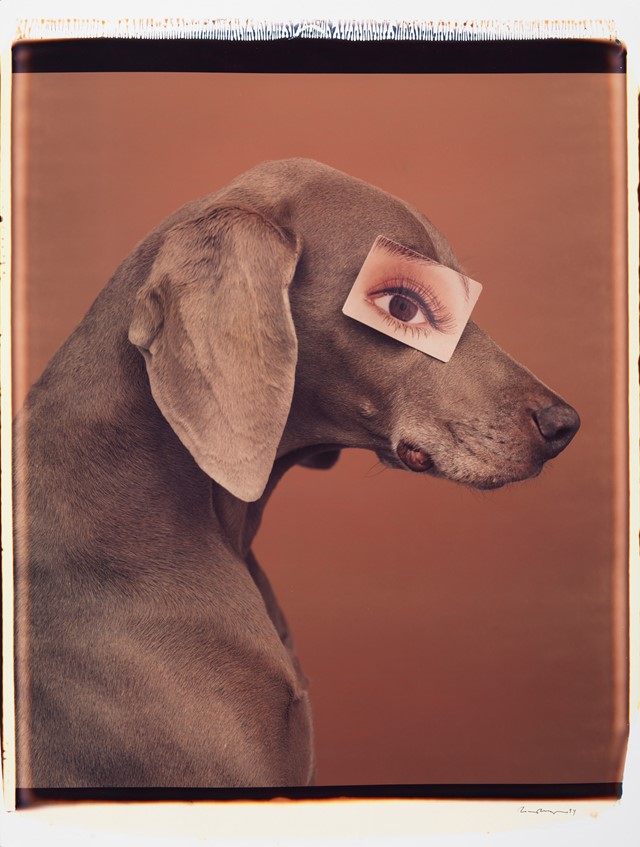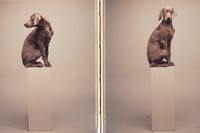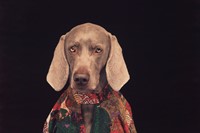The American photographer has been capturing his Weimaraners for 30 years, and it all started with Man Ray
William Wegman first photographed Man Ray in the 1970s. For these photographs, however, it was not the storied Surrealist artist that Wegman captured on plinths, at the kitchen table and in various articles of clothing, but rather his Weimaraner, who he had named after Man Ray. A recognisable character in Wegman’s playful photographs and video art, the dog Man Ray became a beloved character on the contemporary art scene. (Indeed, Wegman told David Letterman in the early 80s that when the artist Man Ray died in 1976, he fielded telephone calls of people offering remorse with “no, it was the artist, not the dog”.) This silver-grey dog was the first of that breed Wegman had owned, and three decades later the American image-maker has become known for his extraordinary photographs of his pet muses – many of whom have descended from Fay Ray, the second Weimaraner Wegman owned and photographed following Man Ray’s death in 1982.
According to Wegman, Man Ray would be “very calm and interested” before the camera. It was an accident that first led the American image-maker to make the dog his subject: at his home in California, Wegman was trying to film “floor pieces” for a video-taped artwork, and Man Ray “was a pest”, often getting in the way of the camera. Wegman, struck by how his grey coat looked on the black and white film, decided to make more footage with Man Ray centre stage; comedic short black and white films followed, and then the famed still photographs of the hound. This is, after all, a dog that would go on to be described, by Sanford Schwartz in The New York Review of Books, thus: “Man Ray... has one of the most intelligent, alert, and handsome faces in the history of photography. If he were a man, he might be a leader, a hero; the mixture of gravity and self-possession in his face would make men willing to follow him anywhere.”
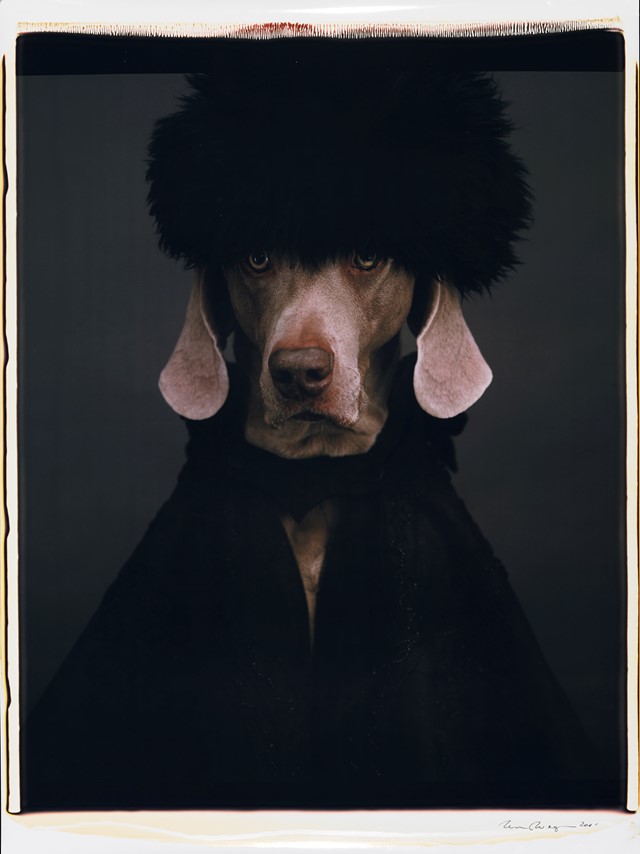
Each hound that Wegman has photographed since takes on a majesty through his lens, thanks to both the breed’s natural poise and striking features and the irreverent props and costumes that the photographer regularly introduces to the frame. Polaroid images – the company had offered the use of its new 20 x 24-inch camera to artists such as Wegman, Andy Warhol and Chuck Close – of Man Ray, Fay, Battina, Chundo, Crooky, Bobbin, Penny, Flo and Topper, taken between 1979 and 2007, are to be displayed this week for the first time in the UK, depicting the dogs in wigs, coats and dresses, on plinths and collaged. There is an absurd and amusing humanity to Wegman’s Weimaraners, who turn their attention to the camera with captivating calm and grace (if not the most minute hint of apathy in their distinctive blue eyes). Naturally photogenic, it’s no wonder these dogs have emerged as some of photography’s most admired subjects.
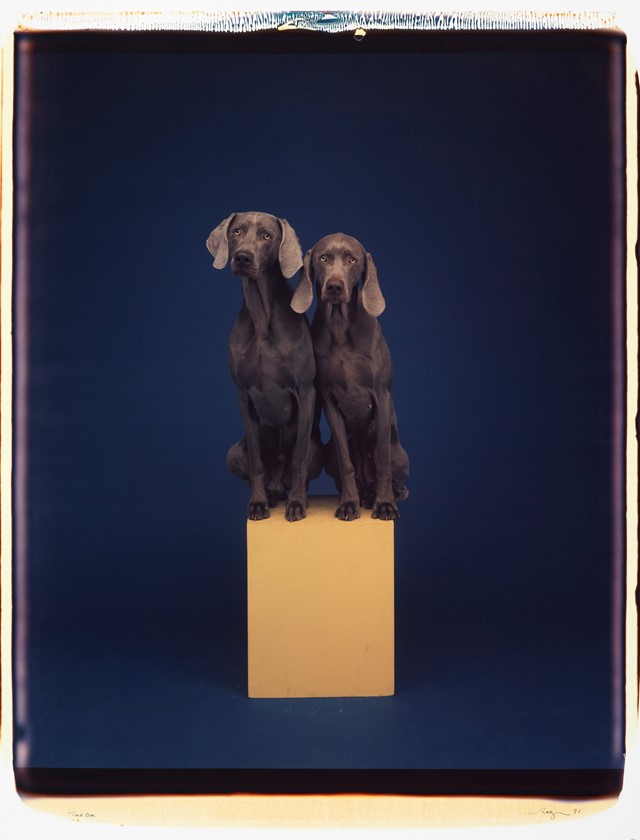
William Wegman: Polaroids is at Huxley-Parlour, London, from September 26 – October 20, 2018.
